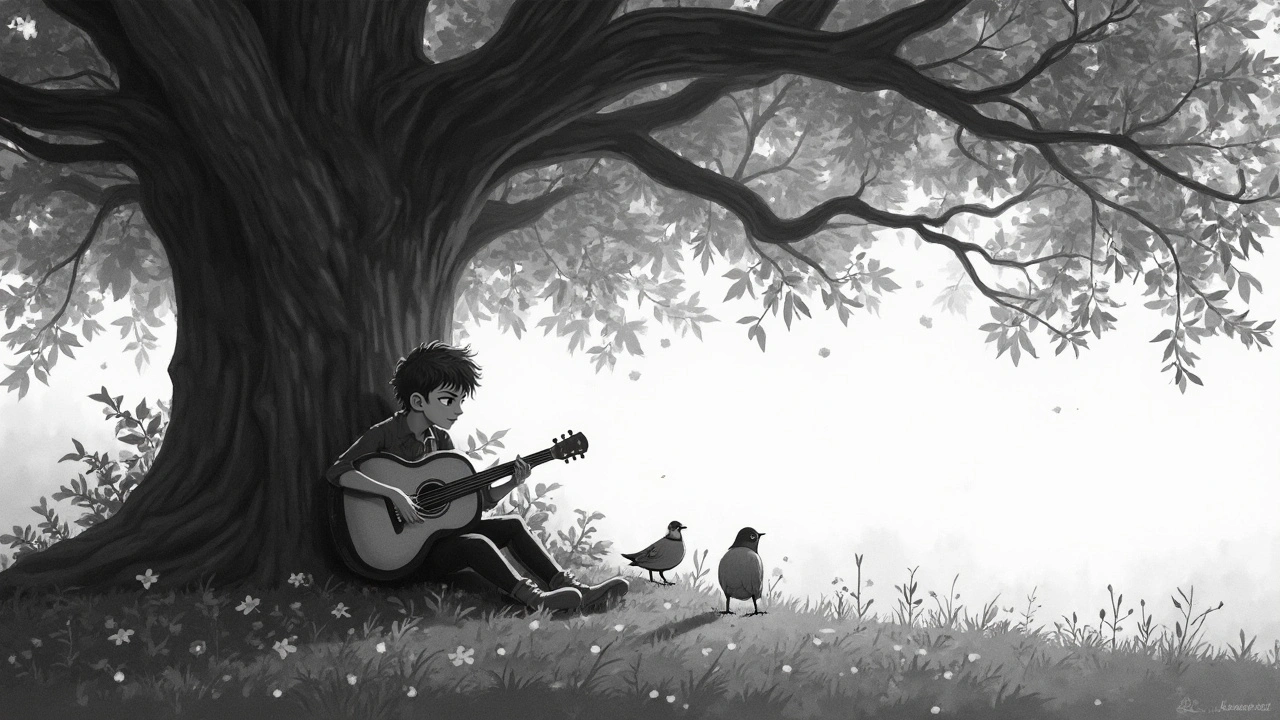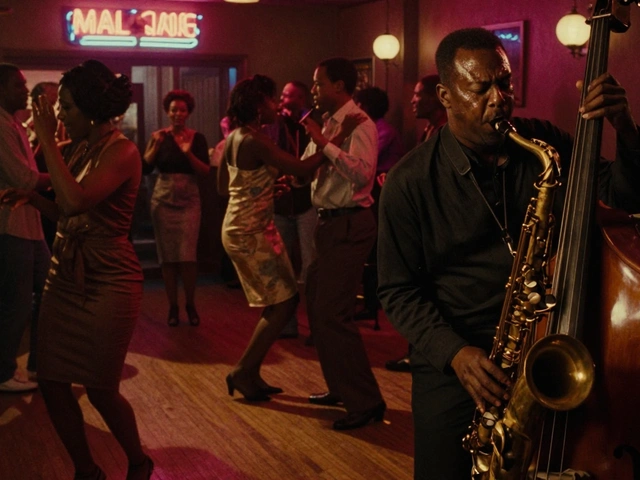The acoustic guitar, a staple of music across the globe, offers something truly magical. Whether you're strumming by a campfire or picking your way through a complex piece, it's hard to deny the vibe this instrument brings. But what's even more fascinating is the guitar's history and the way it has woven its way into the fabric of music and culture.
Going way back, the acoustic guitar's ancestors date back thousands of years. Early forms appeared pretty much simultaneously in different parts of the world, from Persia to Spain. With each iteration, the structure was refined, eventually leading to the modern acoustic guitar we know today. It's like the rockstars of history were passing a baton, improving and innovating along the way.
Now, let's get into its anatomy. Knowing your guitar's nitty-gritty not only helps you play it better but also prolongs its life. From the headstock to the body, each part serves a unique purpose. Isn't it amazing how a combination of strings, wood, and design can produce such rich sound?
Trading stories with other guitar lovers, you can pick up a bunch of neat tricks to enhance your playing. Whether you're just starting or you've been at it for years, there's always something new to learn. Like how keeping your fingertips tough as a nut can help reduce pain when you're practicing those chord progressions.
- A Brief History of Acoustic Guitar
- Understanding Acoustic Guitar Anatomy
- Playing Techniques and Tips
- The Cultural Impact of Acoustic Guitar
A Brief History of Acoustic Guitar
The acoustic guitar we love today has a story that stretches back centuries. Imagine a time long before electric amps and digital tuners; that's where it all began. The roots of this instrument can be traced to ancient civilizations as diverse as Persia and Egypt, where early guitar-like contraptions laid the groundwork.
Fast forward a bit to the Renaissance, and you see the guitar taking a more familiar shape. By the 16th century, the Spanish vihuela and the Renaissance guitar were swooping onto the scene. They were smaller and had fewer strings, but, hey, we all have to start somewhere, right?
In the 19th century, Spanish luthier Antonio Torres revolutionized guitar construction. His design improvements included changes in body shape and fan bracing which significantly enhanced the sound, and that was a game-changer. The Torres' model is pretty much the grand-daddy of the modern acoustic guitar.
By the time the 20th century rolled around, the acoustic guitar was ready for its star moment. Folk, blues, and rock musicians embraced it as their instrument of choice. Think of all those iconic unplugged performances and campfire sing-alongs; none of that would be the same without the trusty acoustic guitar.
| Period | Significant Development |
|---|---|
| Ancient | First string instruments resembling guitars |
| 16th Century | Emergence of vihuela and Renaissance guitar |
| 19th Century | Torres' innovations in guitar design |
| 20th Century | Wide popularity in folk, blues, and rock |
So next time you're strumming along to your favorite tune, you can appreciate all the changes and innovations that led to the acoustic guitar as we know it. It's more than just an instrument; it's a piece of history with each chord you play.
Understanding Acoustic Guitar Anatomy
If you've just picked up your first acoustic guitar, or if you're looking to deepen your knowledge, getting to know its different parts is key. What makes the guitar sing, and how does each part fit together to create that iconic sound?
1. The Headstock
The headstock sits at the top of the guitar and holds the tuning pegs. These tuning pegs, or tuners, allow you to adjust the pitch of your strings. It's like the steering wheel of your guitar, helping to keep you in tune.
2. The Neck and Fingerboard
Below the headstock is the neck, the long wooden piece, and on its front, you find the fingerboard. The fingerboard's frets are your roadmap, guiding your fingers to create different notes and chords. A fun fact: some guitars have a fingerboard made of different wood from the neck, adding a bit of flavor to your playing.
3. The Body
This is where your music comes alive. The body of the acoustic guitar acts like a big speaker box, amplifying the vibrations from the strings. There are usually two types: the dreadnought, known for its bold sound, and the smaller concert guitar, which offers a softer tone.
"A well-crafted guitar body can capture the soul of the player," says renowned luthier, Paul Reed Smith.
4. Sound Hole
Situated in the body, the sound hole allows sound to project outwards. Think of it as the mouthpiece. Ever strummed the strings lightly and felt the air moving? That's the sound hole doing its job.
5. Bridge and Saddle
The strings stretch over the bridge and saddle, located on the body. They transmit vibrations to the body, which are then projected out. The saddle, sitting atop the bridge, also aids in adjusting the string's action - the height of your strings from the fretboard - crucial for a smooth playing experience.
6. Strings
Can’t forget about the strings! Usually, there are six of them on an acoustic guitar. They come in different materials and thicknesses, which can tweak your tone. Experimenting with different strings can bring a new voice to your playing.
All these parts come together to form the humble acoustic guitar - a beautifully simple yet intricate instrument that lets your creativity take center stage. Each one, like a trusty companion, has its quirks and characteristics, and knowing them only deepens your connection with the music.

Playing Techniques and Tips
Getting the hang of the acoustic guitar can feel a bit daunting at first, but with the right techniques and tips, you'll be making music in no time. Let's dive into some essential skills and tricks that'll help you strum better and play smoother.
Basic Strumming Patterns
To start, focus on basic strumming patterns. These are the backbone of many songs and help you keep rhythm. One easy pattern is the simple down-up strum. You can play it while counting “1 and 2 and 3 and 4 and,” strumming down on the numbers and up on the “ands.”
Finger Picking for Beginners
Finger picking adds a whole new texture to your music. Start with a pattern like the Travis picking style. For a simple exercise, try anchoring your thumb on the sixth string, and use your index and middle fingers for the third and second strings. Practice to get a feel for moving your fingers independently.
Chord Transitions
Quick and smooth chord transitions can transform your playing. Practice switching between basic chords like G, C, and D. Spend at least 15 minutes every session just going back and forth between chords until you're comfortable.
A well-known musician, Tommy Emmanuel, once said, "Practice slowly, because if you practice slowly, you forget less and learn faster." Take this wisdom to heart as you work on your transitions and techniques.
Using a Metronome
A metronome might feel like a taskmaster, but it's incredibly helpful for developing timing. Set it to a slow tempo and play along. Gradually increase the speed to improve your endurance and precision.
Strengthening Your Fingers
Playing acoustic guitar demands finger strength and dexterity. Try simple exercises: practice scales, press down on each string carefully, and do pull-offs and hammer-ons. These exercises will make your fingers more flexible and responsive.
Keeping Your Guitar in Tune
Believe it or not, a well-tuned guitar can make your practice much more enjoyable. Use a digital tuner or tuning app to keep it pitch-perfect. Tuning regularly not only makes your guitar sound better but also helps train your ear.
Incorporating these techniques into your routine will definitely up your acoustic guitar game. Remember, consistency is key, so keep practicing and having fun!
The Cultural Impact of Acoustic Guitar
The acoustic guitar isn't just an instrument; it's a symbol, a cultural icon that's strummed its way into the hearts of millions. From rock legends like Bob Dylan to folk heroes like Joni Mitchell, the acoustic guitar has been the backbone of countless iconic songs and movements.
In the 1960s, the acoustic guitar became a powerful vehicle for social change. Artists used it to protest war, demand civil rights, and ultimately bring about societal shifts. Remember Woodstock? It wasn’t just about hippies and free love—it was a showcase of how the acoustic guitar could unite people behind a cause.
Acoustic Revolution in Popular Music
The influence of the acoustic guitar reaches every corner of the music world. Even in pop music, where electric beats reign supreme, acoustic versions of popular songs often climb the charts, offering a more intimate connection with listeners. Ed Sheeran's early career is a perfect example, where his guitar and loop pedal captivated audiences worldwide, proving that sometimes simplicity wins.
The Acoustic Guitar in World Musics
Globally, different cultures have embraced this instrument, putting their unique spin on things. In Latin America, it's not uncommon to find an acoustic guitar at the heart of traditional music genres like Flamenco or Bossa Nova. In African folk music, the guitar often combines with rhythmic patterns to tell rich, vibrant stories.
Modern-Day Acoustic Icons
Even today, the acoustic guitar remains a favorite among musicians breaking onto the scene. Artists like John Mayer and Taylor Swift started small but quickly built massive followings, anchoring their success with acoustic performances.
If you’ve ever been to an open mic night or a friend's house party, you've seen firsthand the community around this instrument. It’s not just about the music; it’s about shared experiences and connections formed around a campfire or at a local pub, proving time and again that the acoustic guitar is more than just a musical instrument.






